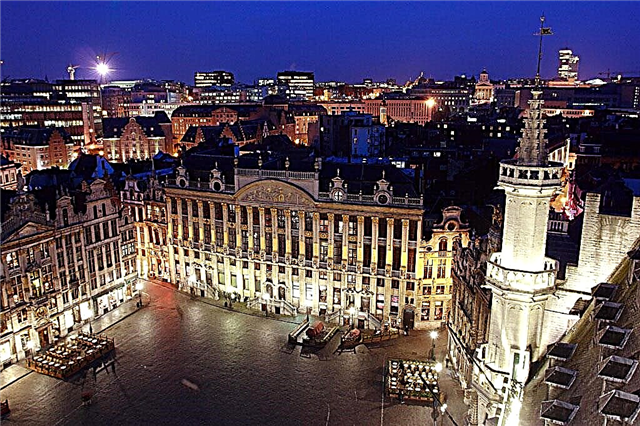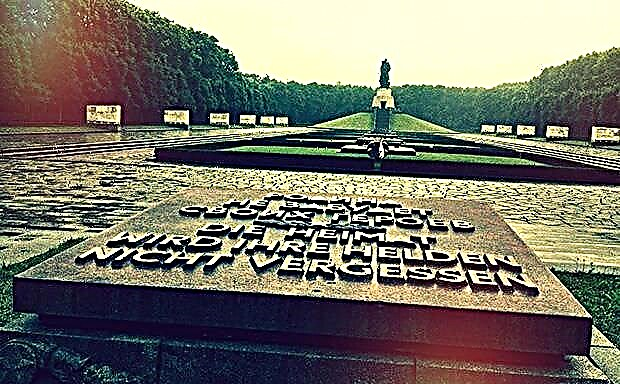Andalusia is the heart of southern Spain, its blood, soul and history. Granada is the heart of Andalusia, which still retains the memories of the power of yesteryear. The city attracts tourists with the passionate rhythms of flamenco, the splendor of Catholic cathedrals, the magnificent architecture of the old quarters and the restless gypsy spirit, as if floating in the air.
The grandiose Alhambra - a witness to the heyday of the Granada Emirate, the amazing caves of the Sacromonte quarter, the tomb of the famous Ferdinand of Aragon and Isabella of Castile - this is just a small list of the attractions of Granada. From time immemorial, the Generalife gardens have bloomed here against the backdrop of the snow-capped Sierra Nevada ridges, and in the evenings hospitable taverns light up their lights and invite spectators to enjoy a spectacular flamenco dance.

The best hotels and hotels at affordable prices.
from 500 rubles / day
What to see and where to go in Granada?
The most interesting and beautiful places for walking. Photos and a short description.
Alhambra
An impressive palace complex surrounded by landscaped gardens, an ancient fortress of the Moorish rulers of the Emirate of Granada. The Alhambra is the highest architectural achievement of the Nasrid dynasty, which ruled southern Spain from 1230-1492. The architectural ensemble of the Alhambra includes palaces, mosques, gardens, artificial reservoirs, residential buildings and administrative buildings.

Sacromonte quarter
Unique gypsy quarter, which is part of the historic Albaycín district. Since the 15th century, gypsies have settled in caves located on the slopes of one of the city's hills. It is believed that it was these Spanish "gitanos" that created the wonderful art of flamenco. The caves are still inhabited, they are equipped according to modern realities. Some are inhabited by people, others are adapted for flamenco concerts and museums.

Albayzin quarter
Ancient Arab Quarter, the historic center of Granada. It is located on a hill overlooking the Alhambra and the city's surroundings. Albaysin has existed for more than 700 years, but over the past time it has changed little - all the same white houses, narrow stone streets covered with paving stones, and small taverns. The first settlements on the site of Albayzin existed in the era of Antiquity before the arrival of the Moors.

Granada Cathedral
Cathedral of the XVI-XVII centuries, built in honor of the victory of the Reconquista and the liberation of Spain from Moorish rule. Granada became the last stronghold of the weakening caliphate, and after its conquest in 1492, the Catholic kings decided to build a grand Christian temple. In the appearance of the Granada Cathedral, the influence of several architectural styles is noticeable: Gothic, Baroque, Classicism and the Renaissance.

Royal chapel
The chapel is part of the architectural complex of the Cathedral of Granada, it was built at the beginning of the 16th century according to the project of E. de Egas. The place is famous for the fact that Catholic kings - Isabella and Ferdinand are buried here. It was thanks to these rulers that Spain was liberated from Arab rule. Also next to the crowned spouses under the vaults of the chapel is the tomb of their daughter Juana the Mad and her husband Philip the Fair.

Sacromonte Abbey
The abbey is located outside the city limits of Granada on the slopes of the Valparaiso hill. In the XVI - XVII centuries. these lands became a place of mass pilgrimage for Christians, since there were found tablets describing the martyrdom of some saints, as well as their relics. After some time, with the approval of the Pope and his confirmation of the authenticity of the finds, the abbey was erected.

Monastery of Saint Jerome
Monastery of the 15th century, designed by D. de Siloé. The monastery of Saint Jerome became the first Christian monastery built after the expulsion of the Moors. There is evidence that the decision to build it was made even before the victory over the Arabs. On the territory of the monastery is the grave of the famous commander of the Reconquista - F.G. de Cordoba. For his brilliant victories, he was awarded the title of Great Captain.

Carthusian monastery
The building of the monastery complex is a striking representative of the architectural era of the Spanish Baroque. The construction of the monastery began in 1506 and lasted for almost 300 years. For such a long time, the look has absorbed elements of several architectural styles. As a result of the sale of the surrounding land in the 19th century, the monastic cells and the abbot's house were lost, but the rest of the monastery retained its original appearance.

Basilica of Saint John of God
The church is located near the monastery of St. Jerome. The basilica was erected in the 18th century with funds from the Order of the Hospice, whose patron and founder was St. John of God. It was decided to name the church in his honor. The relics of this saint are kept inside the temple. The interior is richly decorated with gilding, decorated with wall paintings and mirrors, massive candelabra and other elements.

Granada Madrasah
Former Moorish school founded by Emir Yusuf I in the 14th century. Now on the territory of the madrasah there is the Academy of Fine Arts, which is part of the University of Granada. In the Middle Ages, a wide range of disciplines were taught in madrassas: law, mathematics, history, medicine. Some of the best thinkers of their time worked here. The school was closed in 1500 at the urging of the Catholic clergy. The building passed from owner to owner until it was in the hands of the University.

Arab Baths
Active baths located on the ruins of a medieval hammam at the foot of the Alhambra. The baths were reopened in the 17th century and were the first in Europe. Inside, visitors are invited to fully indulge in the ancient Moorish ritual of bathing "al-andalus" among the magnificent historic interiors. Additionally, you can order a relaxing massage or swim in the pool.

Corral del Carbon
Former Moorish caravanserai located near the cathedral. The complex was built during the heyday of the Nasrid dynasty in the XIV century, it is an exemplary representative of the Mudejar architectural style. In the 16th century, for some time, the inn was used as a coal warehouse, hence the name. In the 20th century, the Corral del Carbon was restored several times.

Science Park
A modern museum and a platform for experiments, where you can learn how many physical processes "work", what happens during natural disasters, how the planet works and what the human body consists of. In addition to the theme rooms, the Science Park has a planetarium, a tropical butterfly garden and an observatory with an observation tower. It is better to come here with children, since many attractions are designed for an inquiring child's mind.

Generalife Gardens
Historical complex consisting of a palace and landscaped gardens. In the XIII-XIV centuries, the residence of the rulers of Granada was located here. Since 1984, this site has become part of the UNESCO List of Historical Heritage. The complex is the apogee of Arabian park art. Everything here is designed taking into account the harmony of space - cypress alleys, small fountains, rose gardens create a unique feeling of privacy and tranquility.

Viewpoint Mirador de San Nicolas
The observation deck is located in the Albayzin district. All excursions in this historic quarter must include a visit to Mirador. From here, there are excellent views of the Alhambra, especially romantic and mesmerizing in the evening.Street musicians and souvenir sellers are frequent guests on the site. The place is popular with couples in love; a lot of them gather here at night.












